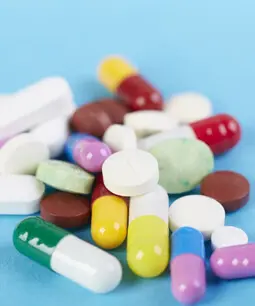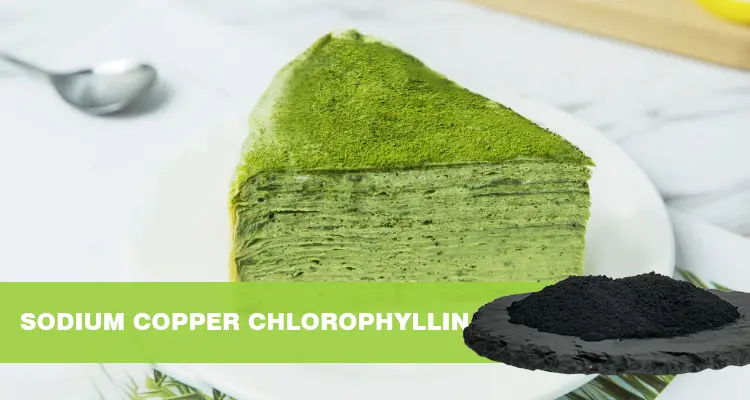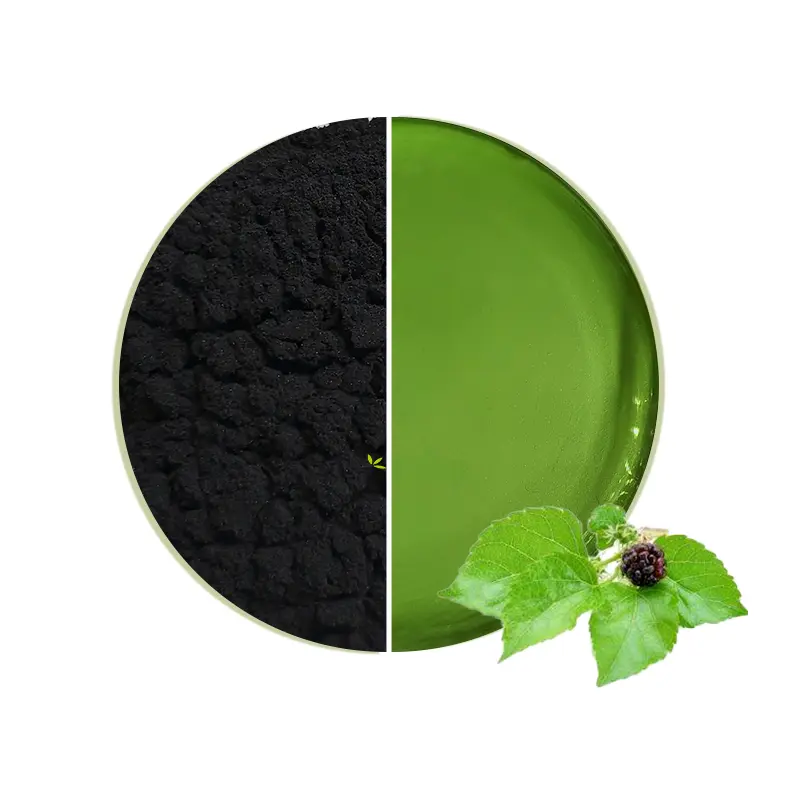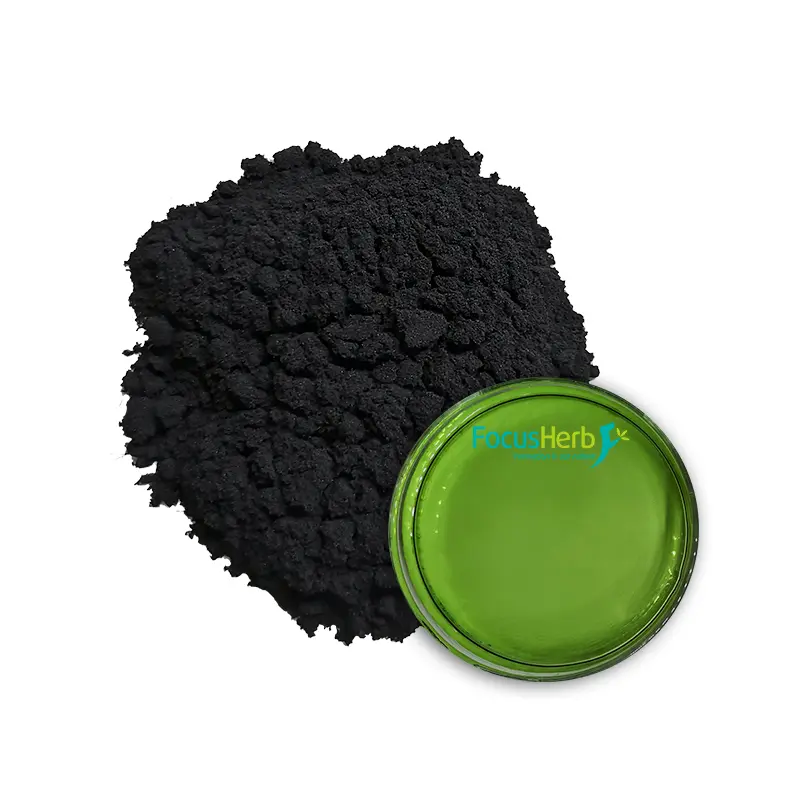Sodium copper chlorophyllin, a water-soluble derivative of chlorophyll, has a core structure consisting of a porphyrin ring. This porphyrin ring is highly similar to the porphyrin structure of hemoglobin, like a pair of “twins” meticulously designed by nature. Hemoglobin plays a crucial role in the body’s hematopoiesis, carrying oxygen and delivering it to tissues and organs throughout the body, a crucial substance for maintaining life. This similarity between the porphyrin ring of sodium copper chlorophyllin and hemoglobin enables it to directly participate in the metabolism of heme precursors. From a molecular perspective, it is like a precise “key,” skillfully inserting itself into the metabolic “keyhole” of hematopoiesis and exerting a unique effect.
This is supported by numerous studies and experimental data. For example, in an experiment published in Zhejiang Medical Journal, researchers studied models of iron deficiency and aplastic anemia. After applying sodium copper chlorophyllin to these anemia models, they surprisingly found a significant increase in red blood cell counts, by as much as 23%. This data clearly demonstrates that sodium copper chlorophyllin can effectively promote the production of red and white blood cells by replenishing hematopoietic raw materials, acting as a kind of “raw material” for the hematopoietic “factory,” offering hope for improving anemia.
Regulatory Mechanisms of the Bone Marrow Hematopoietic Microenvironment
The bone marrow is like the “super factory” of hematopoiesis in the human body, and the bone marrow hematopoietic microenvironment serves as its “production workshop” and “support system,” playing a crucial regulatory role in the production and development of blood cells. Sodium copper chlorophyllin exerts its miraculous regulatory influence within this “factory,” primarily by activating the proliferation and differentiation of bone marrow pluripotent stem cells (CFU-S), granulocyte-monocyte progenitor cells (CFU-GM), and erythroid progenitor cells (CFU-E).
When sodium copper chlorophyllin enters the human body, it acts as an infusion of “vitalizing factors” into these stem and progenitor cells. In animal experiments, the significant changes it brings are clearly visible. Experimental results showed that sodium copper chlorophyllin increased the number of nucleated cells in the bone marrow by 41%, significantly increasing the number of “production workers” in the hematopoietic “factory,” enabling more efficient blood cell production. It also promoted the release of neutrophils from the bone marrow reserve pool into the peripheral blood, like deploying “reserve troops” to the “front lines” in a timely manner, enhancing the blood’s immune and transport functions.
In addition, studies on irradiated mice provided strong evidence for the efficacy of sodium copper chlorophyllin. In the experiments, the hematopoietic system of irradiated mice was severely damaged. However, after administration of sodium copper chlorophyllin, platelet counts increased by 35%. This data demonstrates that sodium copper chlorophyllin can effectively repair the damaged hematopoietic system. Further research has shown that it also accelerates the repair of bone marrow stromal cells. Bone marrow stromal cells act as the “infrastructure” of the “production plant,” supporting the survival, proliferation, and differentiation of hematopoietic stem cells. Sodium copper chlorophyllin provides a good living and development environment for hematopoietic stem cells by rebuilding the support function of the hematopoietic microenvironment, allowing the hematopoietic “factory” to resume normal production order, continuously produce various blood cells, and maintain the normal physiological functions of the human body.
Precisely Applicable Populations and Clinical Benefit Scenarios
(I) Core Applicable Populations for Hematologic Diseases
Leukopenia Patients
In modern medical treatment, while many treatments can have a therapeutic effect, they can also cause side effects, with leukopenia being a common one. For example, the antipsychotic drug clozapine, while highly effective in treating severe mental illnesses like schizophrenia, can also cause leukopenia. This puts patients at increased risk of infection while simultaneously treating their mental illness. Similarly, interferon therapy for chronic hepatitis B can also cause adverse reactions such as bone marrow suppression, leading to a decrease in white blood cell count and severely impacting treatment tolerance. According to relevant studies, approximately 30%-40% of patients treated with interferon for chronic hepatitis B experience varying degrees of leukopenia.
The emergence of sodium copper chlorophyllin offers new hope for these patients. By enhancing bone marrow hematopoietic function, sodium copper chlorophyllin can increase white blood cell counts by an average of 1.2×10⁹/L, with an efficacy rate of up to 72% (Journal of Clinical Hematology). Clinically, sodium copper chlorophyllin is particularly effective in patients with grade I-II bone marrow suppression (white blood cell count 3.0-3.9×10⁹/L). In a clinical study of 100 patients with leukopenia caused by antipsychotic medication, sodium copper chlorophyllin significantly increased white blood cell counts in 70 patients after one month of treatment, with 40 returning to normal. This significantly reduced the risk of infection caused by granulocytopenia and significantly improved their quality of life. This demonstrates the effectiveness and importance of sodium copper chlorophyllin in the treatment of leukopenia. It can safeguard patients’ treatment, reduce the risks associated with leukopenia, and allow them to more safely receive treatment for other illnesses.
Adjunctive Therapy for Aplastic Anemia
Aplastic anemia is a serious hematologic disorder with a complex pathogenesis, primarily due to bone marrow failure, leading to pancytopenia. Currently, immune-mediated damage is considered a key mechanism in the development of aplastic anemia. In this condition, the body’s immune system mistakenly attacks its own hematopoietic stem cells, resulting in suppressed hematopoiesis. Serum cytokines such as IFN-γ and TNF-α play a crucial role in this process, inhibiting the proliferation and differentiation of hematopoietic cells and further exacerbating the condition. Simultaneously, the CD4⁺/CD8⁺ immune balance in the patient’s body is disrupted, leading to immune dysfunction and making the disease even more difficult to control.
Sodium copper chlorophyllin has demonstrated unique adjunctive therapeutic potential in the treatment of aplastic anemia. In models of immune-mediated aplastic anemia, sodium copper chlorophyllin combined with cyclosporine has achieved remarkable results. By reducing serum levels of hematopoietic inhibitory factors such as IFN-γ and TNF-α, sodium copper chlorophyllin can effectively mitigate the immune system’s attack on hematopoietic stem cells, creating a favorable environment for their proliferation and differentiation. It also restores the CD4⁺/CD8⁺ immune balance, modulating the body’s immune function and enhancing resistance. Experimental data show a 28% increase in platelet count compared to the cyclosporine alone group, which is of significant significance in improving patients’ bleeding tendency. In clinical practice, many patients with aplastic anemia have experienced significant improvement in bleeding symptoms and a significant improvement in their quality of life after receiving sodium copper chlorophyllin combined with cyclosporine. This provides a new and effective treatment option for aplastic anemia.
(II) Hematopoietic Support Associated with Hepatobiliary Disease
The liver plays a vital role in the human body. It participates in important physiological processes such as metabolism and detoxification and is closely linked to hematopoiesis. When liver diseases occur, such as acute or chronic hepatitis, liver function is impaired to varying degrees. This not only affects the liver’s own normal function but also indirectly impacts the hematopoietic system. In patients with acute or chronic hepatitis, liver cell damage suppresses the function of the liver’s reticuloendothelial cells, weakening their support for hematopoietic stem cells. Impaired liver function also leads to impaired synthesis of coagulation factors, predisposing patients to bleeding. Furthermore, the liver’s reduced ability to metabolize and store nutrients impairs the supply of raw materials for hematopoiesis, leading to anemia.
Sodium copper chlorophyllin has a unique mechanism of action in the treatment of acute and chronic hepatitis. It revitalizes the liver’s reticuloendothelial cells, acting as a “vitalizer” to restore and enhance their function. In this way, sodium copper chlorophyllin accelerates liver cell repair and promotes the recovery of liver function. Clinical observations have shown that treatment with sodium copper chlorophyllin reduces serum total bilirubin by 19%, demonstrating significant improvement in the liver’s bilirubin metabolism and reduced jaundice symptoms. At the same time, a 15% reduction in prothrombin time indicates that coagulation factor synthesis is promoted, improving the patient’s coagulation function and reducing the risk of bleeding. In a clinical study of 200 patients with acute and chronic hepatitis, after three months of treatment with sodium copper chlorophyllin, 160 patients showed significant improvement in liver function indicators, and 120 of these patients also experienced varying degrees of relief from anemia. This fully demonstrates the significant effectiveness of sodium copper chlorophyllin in improving coagulation factor synthesis disorders and anemia caused by impaired liver function. It can provide strong support for the recovery of patients with hepatobiliary diseases and improve their quality of life.
Contraindications and Risk Warnings
Absolute Contraindications
Sodium copper chlorophyllin is absolutely contraindicated for individuals with copper metabolism disorders (such as Wilson’s disease) and those with drug allergies. Wilson’s disease is an autosomal recessive copper metabolism disorder in which copper transporters malfunction, leading to copper ion accumulation. If these individuals use sodium copper chlorophyllin, the copper ions contained in the drug can further exacerbate copper ion accumulation and cause severe hepatocerebral toxicity. For those with drug allergies, sodium copper chlorophyllin may trigger allergic reactions, which can be life-threatening in severe cases. Therefore, for the safety of these individuals, its use must be strictly prohibited.
Use with caution in pregnant and lactating women
Due to their unique physiological conditions, there is currently no definitive safety data for sodium copper chlorophyllin in these groups. Although sodium copper chlorophyllin has a good safety profile in the general population, pregnant and lactating women may metabolize and respond to the drug differently, potentially affecting the development of the fetus or infant through the placenta or breast milk. Therefore, these two groups of patients should use this medication with caution after a comprehensive evaluation by a doctor, weighing the pros and cons. Patients with renal failure, due to impaired renal function, can be affected in the excretion of drug metabolites, leading to drug retention and an increased risk of adverse reactions. Therefore, these patients should reduce their sodium copper chlorophyllin dosage and closely monitor their renal function to adjust the dosage promptly.
Managing Adverse Reactions
While most patients tolerate sodium copper chlorophyllin well, a few may experience adverse reactions. Urticaria-like allergic reactions or severe abdominal pain are relatively serious adverse reactions. If these symptoms occur, the patient should discontinue the medication immediately to prevent further aggravation of the adverse reaction. For urticaria-like allergic reactions, antihistamines can be used to alleviate symptoms. Antihistamines block the binding of histamine to receptors, thereby reducing the itching, redness, and swelling associated with allergic reactions. In most cases, symptoms can be effectively relieved by promptly discontinuing the medication and using an antihistamine. However, in rare cases, symptoms may be severe and difficult to relieve with conventional treatments. In these cases, patients must seek medical attention and receive professional treatment in a timely manner.
Future Directions
(I) In-depth Analysis of the Mechanism of Action
Although it is currently known that sodium copper chlorophyllin can promote hematopoiesis, its specific mechanism of action still requires further investigation. Further clarification is needed regarding the regulatory effects of sodium copper chlorophyllin on molecules on the surface of hematopoietic stem cells. For example, molecules such as CD34⁺ and CD117⁺ on the surface of hematopoietic stem cells play a key role in regulating their self-renewal, proliferation, and differentiation. Studying how sodium copper chlorophyllin affects the expression of these molecules and the mechanisms of their interaction will reveal the underlying mechanisms by which it promotes hematopoiesis. Through a series of advanced cell-based experimental techniques, such as flow cytometry and gene editing, we can precisely observe and analyze the regulatory effects of sodium copper chlorophyllin on these surface molecules.
Furthermore, the specific targets by which sodium copper chlorophyllin reduces oxidative damage in hematopoietic cells through the Nrf2 antioxidant pathway also require further clarification. During normal hematopoietic processes, hematopoietic cells are affected by various internal and external factors, resulting in oxidative stress, leading to cell damage and hematopoietic dysfunction. The Nrf2 antioxidant pathway is a crucial intracellular antioxidant defense mechanism, regulating the expression of a range of antioxidant and detoxification enzymes to maintain intracellular redox balance. Sodium copper chlorophyllin may activate the Nrf2 antioxidant pathway, reducing oxidative damage in hematopoietic cells and thereby promoting hematopoiesis. However, further research is needed to elucidate the specific targets and how this pathway is activated. By combining high-throughput technologies such as proteomics and transcriptomics with molecular biological validation, we hope to identify key targets, providing a more solid theoretical basis for precision-targeted therapies and developing more effective treatment strategies, bringing greater benefits to patients with cytopenias.
(II) Dosage Form Innovation and Delivery Optimization
In current clinical applications, sodium copper chlorophyllin is primarily administered in the form of oral tablets. However, this traditional dosage form has limitations, such as low bioavailability and gastrointestinal irritation. To overcome these issues, the development of an enteric-coated sustained-release formulation is a viable option. Enteric-coated sustained-release formulations slowly release drugs in the intestine, preventing them from being destroyed by gastric acid in the stomach, thereby improving drug bioavailability and reducing gastrointestinal irritation. By utilizing advanced coating technologies and sustained-release materials, such as enteric coatings, microspheres, and nanoparticles, sodium copper chlorophyllin is encapsulated, allowing it to be released under the specific pH conditions of the intestine. This results in slow, sustained release of the drug, prolonging its duration of action and enhancing therapeutic efficacy.
In addition to innovative dosage forms, exploring targeted delivery technologies using nanocarriers is also an important direction for future research. Nanocarriers possess unique physicochemical properties, such as small size effects, high surface area, and excellent biocompatibility, enabling them to effectively deliver drugs to specific tissues and organs. By loading sodium copper chlorophyllin onto nanocarriers, such as liposomes, polymer nanoparticles, and nanomicelles, targeted drug delivery can be achieved, allowing the drug to be concentrated in the bone marrow microenvironment. The bone marrow microenvironment is a crucial habitat for the survival and differentiation of hematopoietic stem cells. Increasing drug concentration in the bone marrow microenvironment can more effectively promote the recovery of hematopoietic function. Research has shown that targeted nanocarrier delivery technology can increase local drug concentration by 3-5 times, offering new strategies and hope for the treatment of diseases such as refractory anemia. Through research on nanocarrier surface modification, particle size control, and drug loading optimization, we can further enhance the targeting and drug delivery efficiency of nanocarriers, opening new avenues for the clinical application of sodium copper chlorophyllin.





















